The 1st CanSat Leader Training Program Report
The 1st CanSat Leader Training Program was held from February 14 to March 14, 2011.
It was originally planned to be held till March 20, but the rest of the program from March 15 was cancelled due to the earthquake.
The program has 12 participants from 10 countries: Algeria, Australia, Egypt, Guatemala, Mexico, Nigeria, Peru, Sri Lanka, Turkey and Vietnam. You can see their profiles here.
Schedule & Outline
The schedule and outline are following:
First Term : Building Basic CanSat
- Schedule
-
- February 14 to 17 : Lecture and Building CanSats at Wakayama university
- February 18 : Launch Experiments at Kada, Wakayama
- Outline
-
- Technical Lecture
- Basic tutorial of mbed microcontroller was presented by Senio Networks.

- 12 participants were divided into 3 teams, 4 people per team.
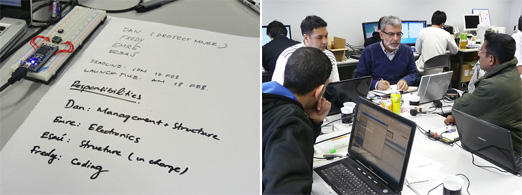
- Each team built their CanSat.
- This term is to grasp what CanSat is, by making "Rapid Prototyping CanSat."
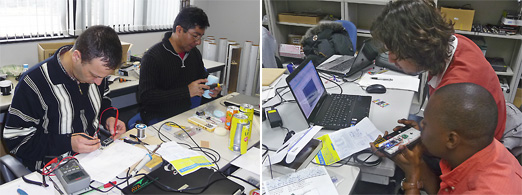
- Launch Experiments
- The CanSats were launched by model rocket at Kada, Wakayama.
After launched by rocket, CanSat is released in the air, descends with parachute, and lands safely. After the experiment, they analyze the data obtained by inner sensors and make summary and presentation.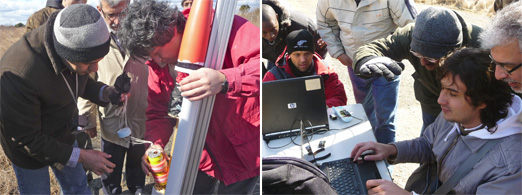
Second Term : Development of Advanced Level CanSat and Making Textbooks of Space Education
- Schedule
-
- February 21 to March 11 : Development of Advanced Level CanSats, Making Textbooks and Lectures at Wakayama university
- February 24 : Introduction Presentation
- March 5 : Midterm Presentation
- March 7 and 10 : Balloon Experiments
- February 21 to March 11 : Development of Advanced Level CanSats, Making Textbooks and Lectures at Wakayama university
- Outline
-
- Development of Advanced Level CanSat and Making Textbooks
- All teams tackled on advanced level "Come Back" CanSat.
The mission is set to "Come Back" to the launch point after released in the air. This is the type of competition set for ARLISS competition as well.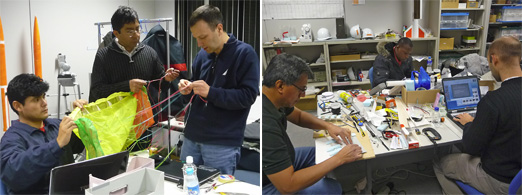
Fig.1 is a fixed wing type. This team struggled a lot to lose its weight to make it light enough to fly well. First, the wing is folded to fit in a rocket and opens with spring. In fact, it flew stably when it was tested with balloon.
Fig.2 is a kind of rover type, but driven by its propeller. Tail wheel controls its direction. This team designed fixed wing type originally, but changed the design on the way.
Fig.3 is a rover type. It separates its parachute off by cutting connection nylon string with heating nichrome wire after landing on the ground. Then starts moving to the direction of target with position and direction information by GPS and other sensors.
- Presentation
- Each team gave presentations twice. The introduction presentation is to outline their development plan. The midterm presentation is to report progress and identify risks.
Teams can clearly define their vision through presentations, questions and answers.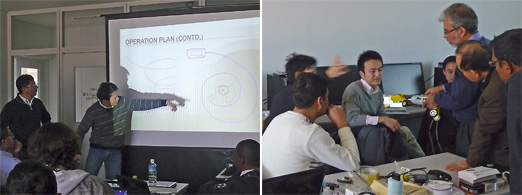
- Balloon Experiments
- Balloon is provided for releasing test in the air. It can be kept in the altitude of up to 100 meters. It is easier and cheaper for testing CanSat than actually launching a rocket.
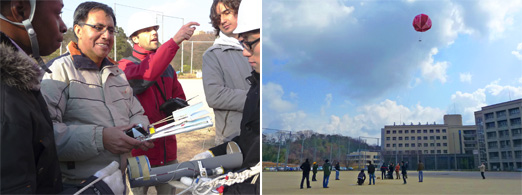
- Lectures
-
- Project management and team building method by Hiroaki Akiyama, professor/director of Institute for Education on Space in Wakayama University
- System design management by Seiko Shirasaka, associate professor in Graduate School of System Design Management, Keio University
- CanSat and CubeSat activity by Seiji Kuroki, professor emeritus in Soka University
- Special Online Lecture: Bob Twiggs, professor of Stanford University and the founder of CanSat and CubeSat
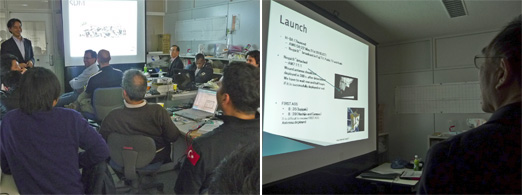
The 2nd Nano-Satellite Symposium
- Schedule
-
- March 14 : The 2nd Nano-Satellite Symposium at Tokyo
- The rest of the symposium from March 15 to 16 was cancelled.
- Outline
- Please visit the symposium official website: http://www.nanosat.jp/
Launch Experiments (Cancelled)
- Schedule
-
- March 19-20 : Launch Experiments of the Advanced Level CanSats in Izu Oshima island (Cancelled)